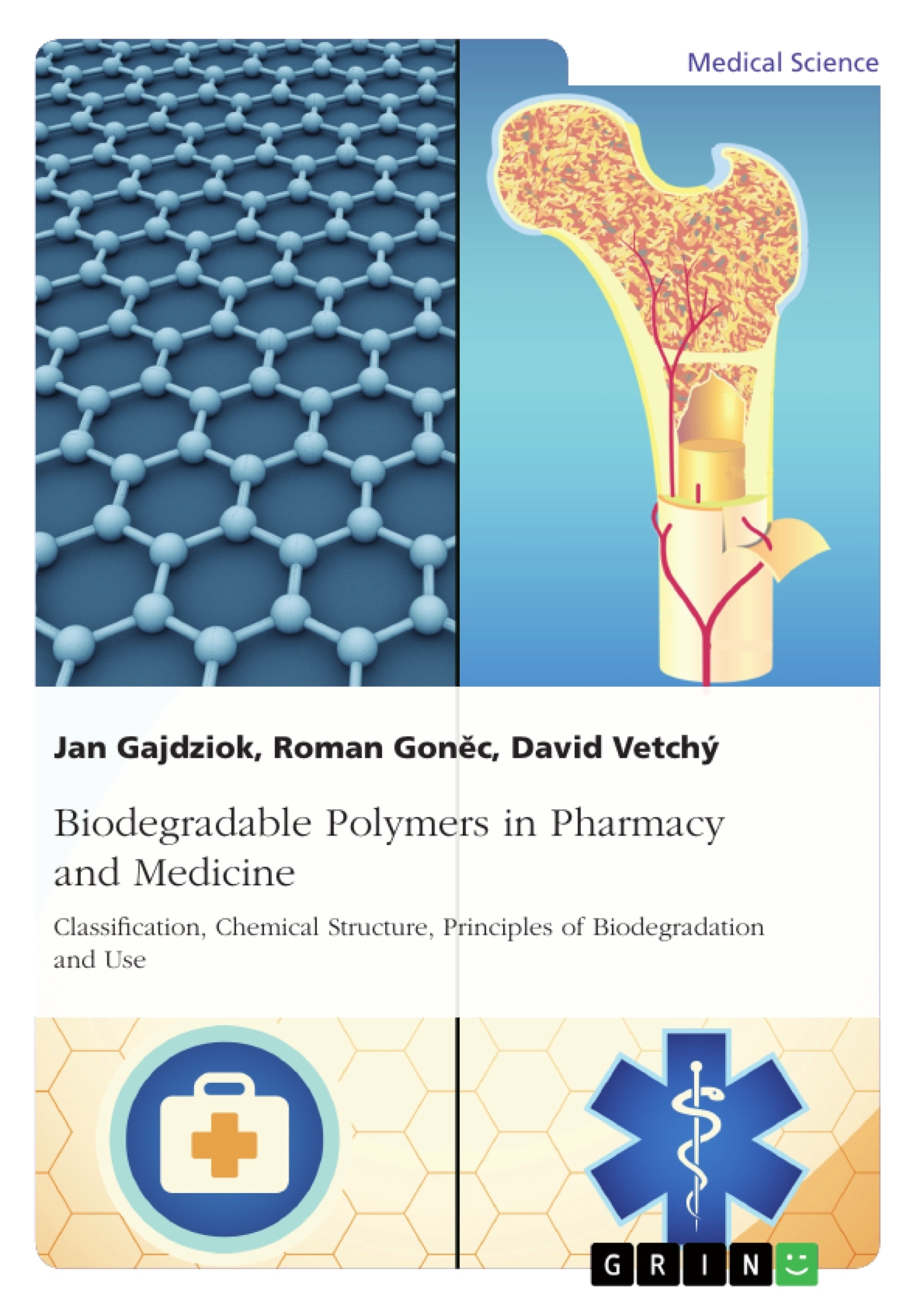The aim of this book is to provide a brief but comprehensive overview on the issue of biodegradable polymers. The introduction chapter is followed by a description of the general characteristics of biodegradable polymers and pathways of their degradation in the human body. Particular pitfalls and specifics of their various biomedical and pharmaceutical applications, especially in the field of pharmaceutical technology, are described in order to define the ideal carrier polymer system for specific types of therapy. Finally, the work presents the classification of these polymers based on the type of degradation mechanism. This section also includes the chemical structure of particular polymer molecules, their chemical or bio-synthesis and the description of their uses in specific biomedical and pharmaceutical applications.
The book could be used as a textbook for students of medical and pharmaceutical sciences as well as by researchers in this field or industrial area.
In the past few decades, biodegradable polymers have reached significant importance in fields of biomedical and pharmaceutical applications. They have become preferred candidates for the manufacture of therapeutic forms, for instance, orthopaedics devices, temporary bone screws and spins, three-dimensional scaffolds for tissue engineering or drug delivery systems for sustained and targeted release. Each of these applications requires material with specific physical, biological, and chemical properties, as well as specific degradation profile. These polymers (natural or synthetic) undergo hydrolytic or enzymatic degradation, which both have some advantages and disadvantages. Most widely used polymer materials in biomedical applications are listed, including their structure and degradation pathways.
Inhaltsverzeichnis (Table of Contents)
- INTRODUCTION AND GOAL
- GENERAL TERMS
- Biodegradable polymers
- Properties of biodegradable polymers
- Biodegradation
- BIODEGRADABLE POLYMERS - EXAMPLES OF USE
- Scaffold constructions in tissue engineering and sutures
- Biodegradable polymers in drug delivery systems
- BIODEGRADABLE POLYMERS
- Polymers degradable by hydrolysis
- Polymers degradable by enzymes
- CONCLUSION
Zielsetzung und Themenschwerpunkte (Objectives and Key Themes)
This book aims to provide a comprehensive overview of biodegradable polymers, exploring their characteristics, degradation pathways, and various applications in the fields of pharmacy and medicine. The text delves into the properties and specific applications of these polymers, highlighting their significance in developing modern therapeutic systems and addressing challenges in drug delivery.
- Biodegradable polymers as a promising alternative for therapeutic applications
- Various degradation pathways of biodegradable polymers, including hydrolysis and enzymatic degradation
- Specific properties of biodegradable polymers suitable for biomedical and pharmaceutical applications
- The use of biodegradable polymers in tissue engineering, orthopaedics, and drug delivery systems
- Challenges and future perspectives in the development and application of biodegradable polymers
Zusammenfassung der Kapitel (Chapter Summaries)
The book commences with a comprehensive introduction to the concept of biodegradable polymers and their significance in biomedical and pharmaceutical fields. The text then delves into the general properties of these polymers, including their physical and chemical characteristics. The degradation pathways of biodegradable polymers, including hydrolysis and enzymatic degradation, are explored in detail, emphasizing the advantages and disadvantages of each mechanism. The chapter concludes with a discussion of the principles governing hydrolytic and enzymatic degradation.
The book continues by discussing the diverse applications of biodegradable polymers in various medical fields, including their use in scaffold constructions for tissue engineering, sutures, and orthopaedics. The chapter focuses on the benefits of using biodegradable polymers for bone fillings, prosthetics, and fixations. The use of biodegradable polymers in drug delivery systems is also explored, highlighting their importance in developing controlled and targeted drug release systems.
The book concludes with a detailed examination of specific types of biodegradable polymers, categorized based on their degradation mechanism. The first section focuses on polymers degradable by hydrolysis, including poly(a-ester)s, polyglycolide (PGA), polylactide (PLA), lactide glycolide copolymer (PLGA), polycaprolactone (PCL), polydioxanone (PDS), poly(trimethylene carbonate) (PTMC), polyhydroxyalkanoates (PHA), polyesters containing aromatic groups, polyurethanes (PUR), poly(ester amides) (PEA), poly(ortho esters) (POE), polyanhydrides (PA), and poly(phosphoester)s (PPE). The second section delves into polymers degradable by enzymes, including polysaccharides like hyaluronic acid (HA), chondroitin sulphate, chitin and chitosan, alginic acid and alginate, cellulose derivatives, and proteins and poly(amino acids) such as collagen, gelatine, natural poly(amino acids), poly(y-glutamic acid) (y-PGA), poly-ε-L-lysine (EPL), cyanophycin, poly(aspartic acid) (PAA), fibrin, elastin and similar peptides, and albumin.
Schlüsselwörter (Keywords)
Biodegradable polymers, biodegradation, hydrolytic degradation, enzymatic degradation, biomaterial, tissue engineering, drug delivery systems, controlled release, targeted release, orthopaedics, sutures, scaffolds, polyesters, poly(a-ester)s, polyglycolide, polylactide, lactide glycolide copolymer, polycaprolactone, polydioxanone, poly(trimethylene carbonate), polyhydroxyalkanoates, polysaccharides, hyaluronic acid, chondroitin sulphate, chitin, chitosan, alginic acid, cellulose derivatives, proteins, poly(amino acids), collagen, gelatine, poly(y-glutamic acid), poly-ε-L-lysine, cyanophycin, poly(aspartic acid), fibrin, elastin, albumin.
- Citation du texte
- Jan Gajdziok (Auteur), Roman Goněc (Auteur), David Vetchý (Auteur), 2016, Biodegradable Polymers in Pharmacy and Medicine. Classification, Chemical Structure, Principles of Biodegradation and Use, Munich, GRIN Verlag, https://www.grin.com/document/340033



